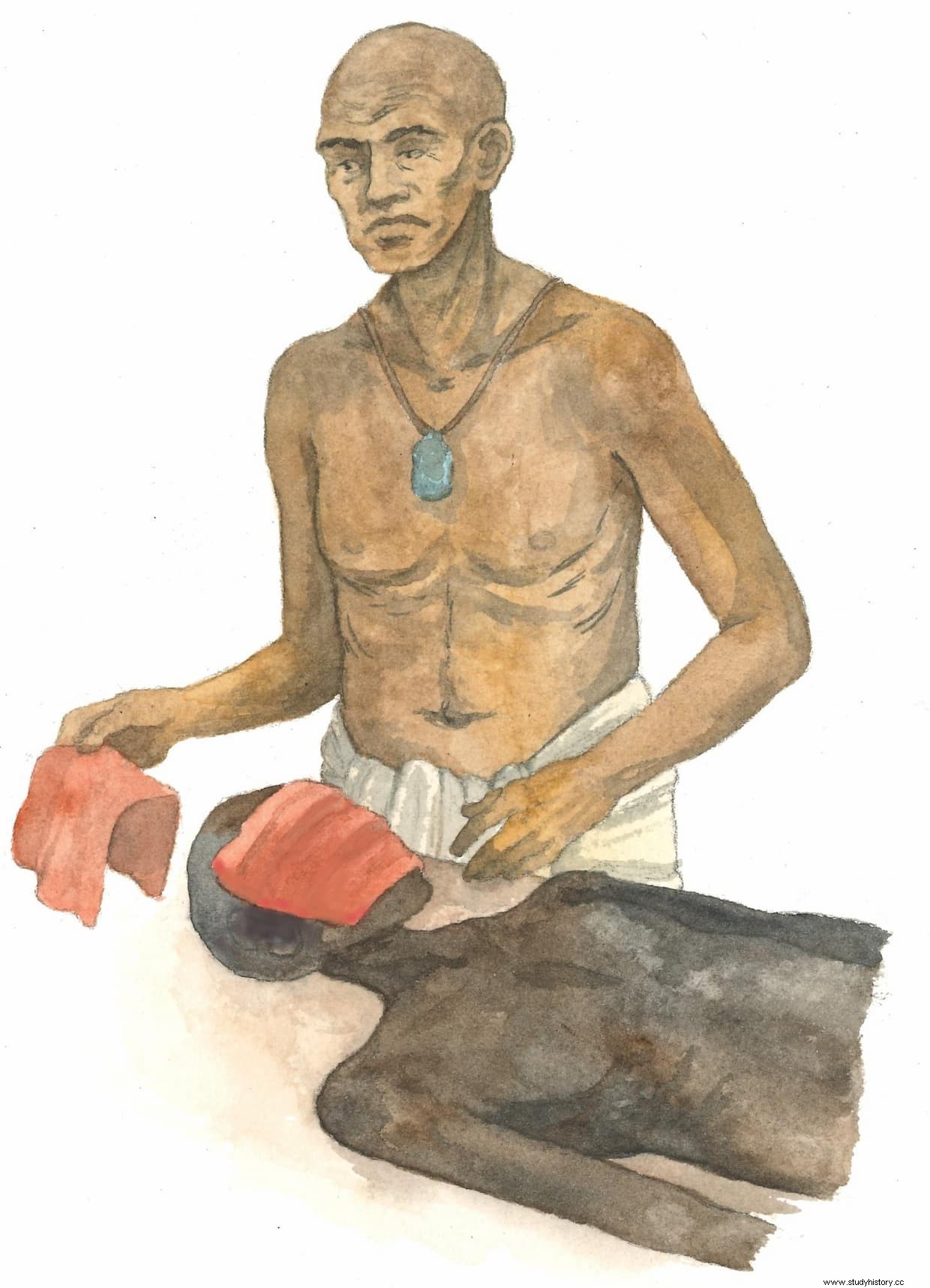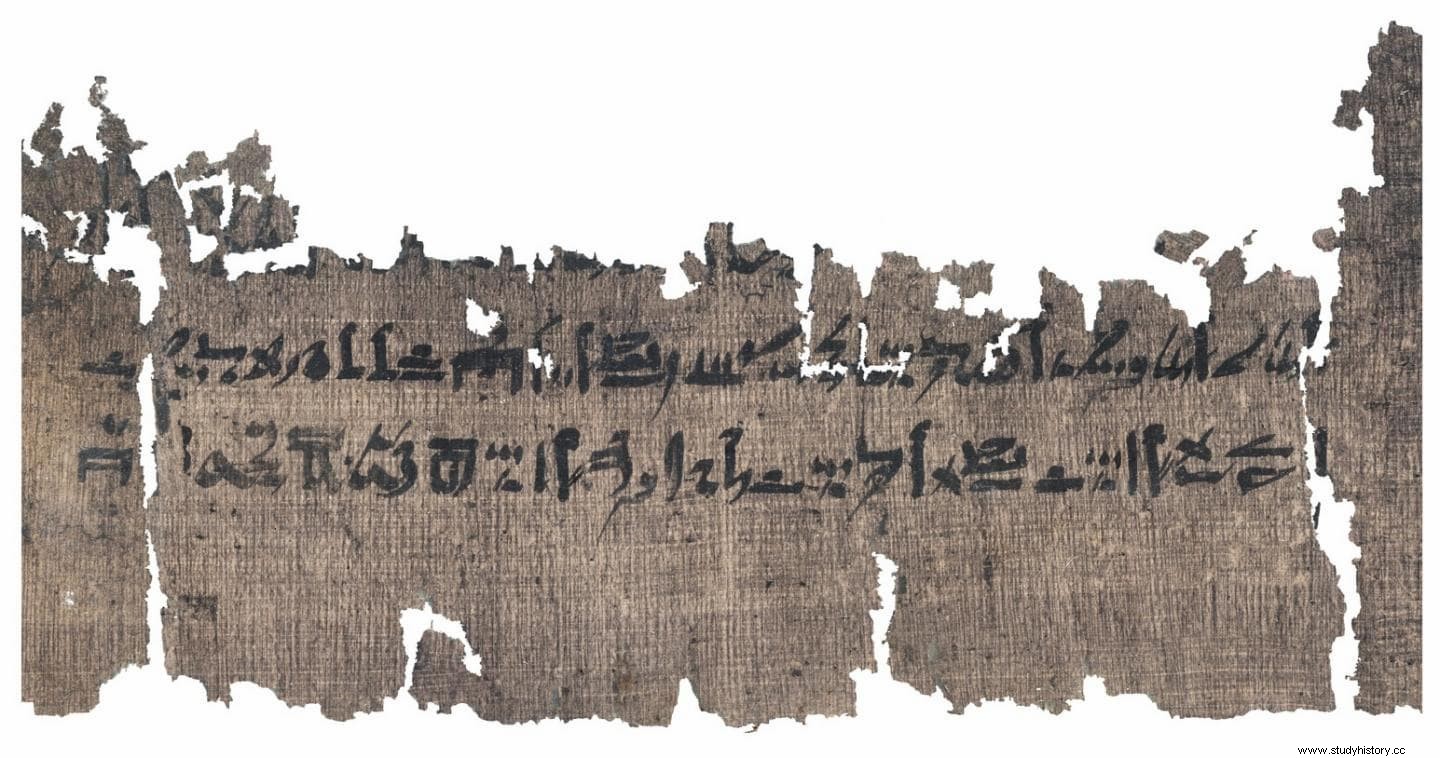Based on a recently discovered manual in a 3,500-year-old medical papyrus, Copenhagen University Egyptologist Sofie Schiødt has been able to help reconstruct the embalming process used to prepare ancient Egyptians for the afterlife. It is the oldest mummification manual ever discovered.
In ancient Egypt, embalming was considered a sacred art, and knowledge of the process was reserved for very few individuals. Egyptologists believe that most of the secrets of this art were transmitted orally from one embalmer to another, so written evidence is scant; Until recently, only two texts on mummification had been identified.
Therefore, Egyptologists were surprised to find a brief manual on embalming in a medical text that deals mainly with herbal medicine and skin inflammations. The manual has been recently edited by Copenhagen University Egyptologist Sofie Schiødt.

Many of the descriptions of embalming techniques that we find in this papyrus have been left out of the two later manuals, and the descriptions are extremely detailed. The text reads as a memory aid, so the readers had to be specialists who needed to remember such details as the recipes for ointments and the uses of different types of bandages. Sofie Schiødt explains that some of the simpler processes, such as drying the body with natron, have been omitted from the text.
According to Schiødt one of the most interesting new information provided by the text refers to the procedure for embalming the face of the deceased. We have a list of ingredients for a remedy that consists largely of plant-derived aromatic substances and binders that are cooked into a liquid, with which embalmers cover a piece of red linen. The red linen is then applied to the face of the deceased to wrap it in a protective cocoon of aromatic and antibacterial matter. This process was repeated at intervals of four days.
Although this procedure has not been identified before, Egyptologists have previously examined several mummies from the same era as this manual whose faces were covered in cloth and resin. According to Sofie Schiødt, this would fit well with the red linen procedure described in this manuscript.
Four was the key number
The importance of the manual in reconstructing the embalming process is that it specifies that the process is divided into intervals of four, and that the embalmers actively work on the mummy every four days.
The ritual procession of the mummy marked these days, celebrating the progress of the restoration of the corporeal integrity of the deceased, which meant 17 processions during the embalming period. Between four-day intervals, the body was covered with cloth and covered with straw impregnated with aromatic substances to keep away insects and scavengers explains Sofie Schiødt.
The Louvre-Carlsberg papyrus
The manuscript, which Sofie Schiødt has been working on for her doctoral thesis, is the Louvre-Carlsberg Papyrus, so named because half of the papyrus belongs to the Louvre Museum in Paris and the other half is part of the Carlsberg Papyrus Collection in Paris. the University of Copenhagen. The two parts of the papyrus originally belonged to two private collectors, and several sections of it are still missing. Based on paleography, that is, the shapes of the signs, the six-meter-long papyrus is dated to approximately 1450 BC, which means that it predates the only other two examples of embalming texts in over a thousand years.

Most of the papyrus, which is the second longest surviving medical papyrus from ancient Egypt, deals with herbal medicine and skin diseases. Specifically, it contains the oldest known treatise on herbs, describing the appearance, habitat, uses, and religious significance of a divine plant and its seed, as well as an extensive treatise on skin swellings. , which are considered diseases sent by the moon god Khonsu.
The papyrus is scheduled to be published in 2022 in collaboration with the Louvre Museum and the Carlsberg Collection of Papyri.
The embalming process
The embalming described in the papyrus, which took place in a purpose-built workshop near the tomb, took place over 70 days divided into two main periods:a 35-day drying period and a 35-day wrapping period. 35 days.
During the drying period, the body was treated with dry natron both inside and outside. Natron treatment began on the fourth day of embalming, after purification of the body, removal of the organs and brain, and sinking of the eyes.
The second period of 35 days was dedicated to wrapping the deceased in bandages and aromatic substances. The embalming of the face described in the Louvre-Carlsberg Papyrus belonged to this period.
The entire 70-day embalming process was divided into 4-day intervals, with the mummy being finished on day 68 and placed in the coffin, after which the final days were devoted to ritual activities that allowed the deceased to continue living in the afterlife.
